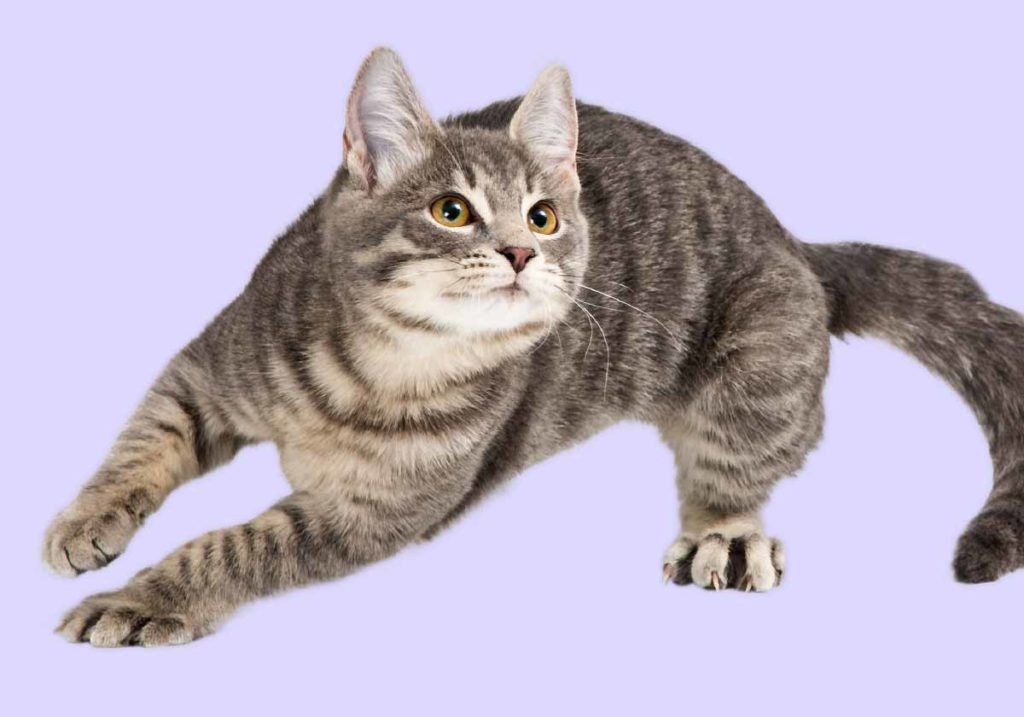Does your pet get seemingly random bursts of energy and dart around the house? One minute they’re calm as can be, the next, they’re bouncing off the walls. While what is referred to as “zoomies” is often seen in dogs, our feline friends also get these periods of hyperactivity that seems to end just as fast as they started.
During a bout of zoomies, your otherwise lazy cat might suddenly leap up and race around the living room or even the entire house, running, jumping, and climbing. They may also punctuate this with growling, meowing, or other vocalizations. Zoomies can be pretty entertaining, but dealing with a frenzied cat who is disruptive and or destructive—especially in the middle of the night—can also be frustrating for cat parents who just want some peace and shut-eye.
Mostly sleep and some play
It’s no secret that cats sleep a lot. Some feline experts estimate that your pet cat spends between 15 and 20 hours a day either resting or fast asleep. In between these extended periods of rest and sleep, cats often experience a surge in energy, which could explain the seemingly random zoomies fits.
But are these spurts of hyperactivity really random? Cats are crepuscular animals, meaning that they are biologically wired to experience their peak hours of activity during twilight, at dawn, and dusk. That being said, cats’ internal clocks and sleep-wake cycles are much different than ours. Take note of when your cat gets zoomies—you may notice they line up with early mornings and evenings, or they may run around without warning in the middle of the night.
Natural born hunters
Domesticated cats, while very comfortable living in our homes and not having to worry about when they’ll be next fed, are still driven by their instincts to hunt and chase prey. This also goes hand-in-hand with their crepuscular sleep schedule—in the wild, your cat would be hunting for food during twilight hours. Instead, they’re racing around your living room.
Rather than catching live critters, you may see your cat stalking imaginary prey and suddenly pouncing. This may trigger the urge to race around the house in a fluffy blur. Bouts of hyperactive play in the form of zoomies are an enriching way for your cat to engage their inner predator.
Energy to burn
Living inside with their humans is safe for a house cat, but it’s also far less interesting and strenuous than surviving in the wild. We’ve talked about how your pet cat has retained its natural predatory instincts and crepuscular sleep cycle—they rest for the majority of the day conserving energy for short, extremely active periods. But here they are, in your house, with no way to expend their energy. Zoomies are a way for your cat to combat their pent-up energy and boredom and break up the monotony of their daily commute from one cozy corner of the house to another. This is common in younger cats and kittens, who, because of their age, naturally have more energy to shed.
Out of the litterbox
Cat parents often report that their feline friend gets zoomies after going to the litterbox. If you notice your cat regularly jetting off after they’ve pooped, there are a number of things that could be happening here. Most likely, your cat is just feeling good and relieved, in which case their zoomies are much like a happy dance. It’s also their natural inclination to stay far away from the smell of their own poop, which is not only an offensive odor but also lets predators know where they are. You can’t blame them for hopping out of the litterbox with some momentum!
For the most part, cat zoomies are natural and harmless. Your feline companion is probably just blowing off some steam and having some fun.










